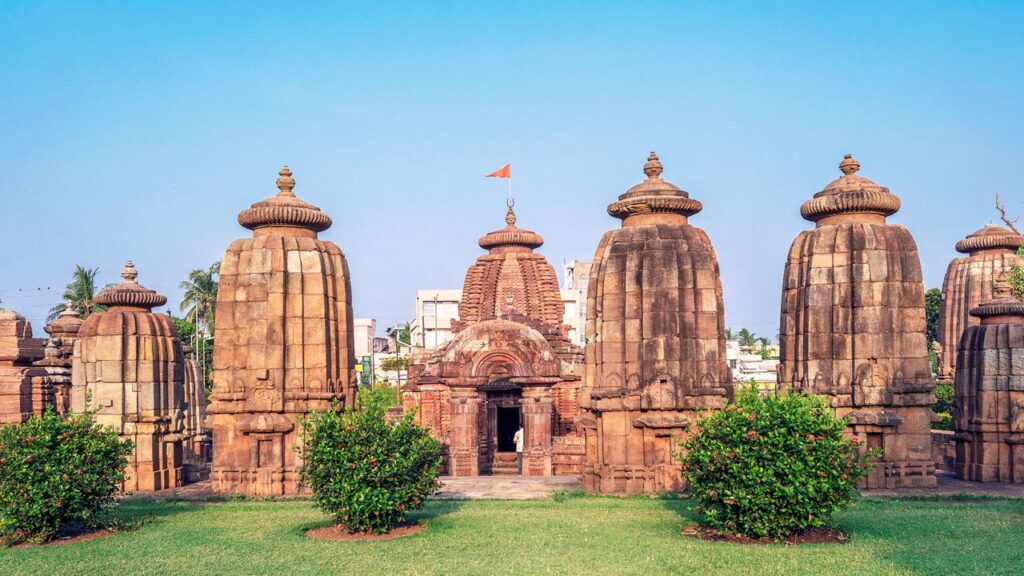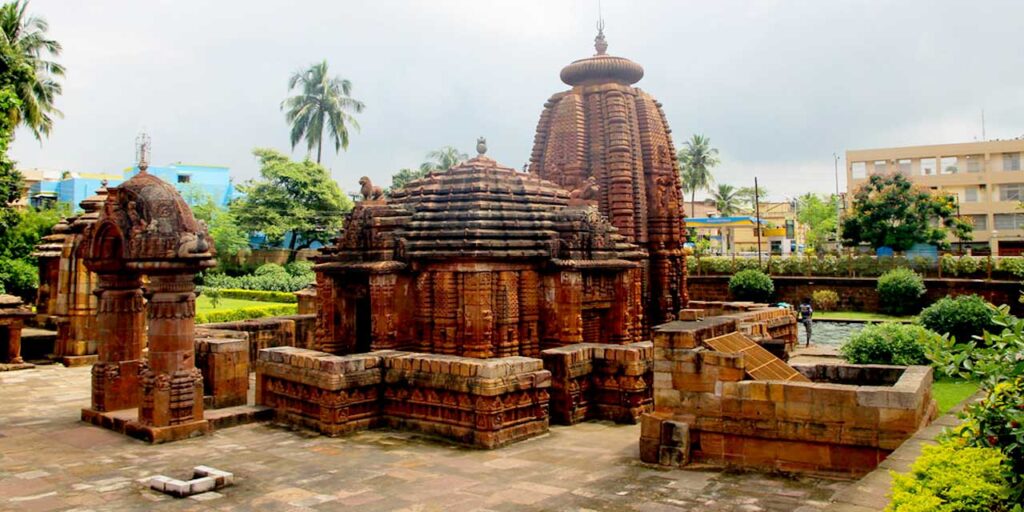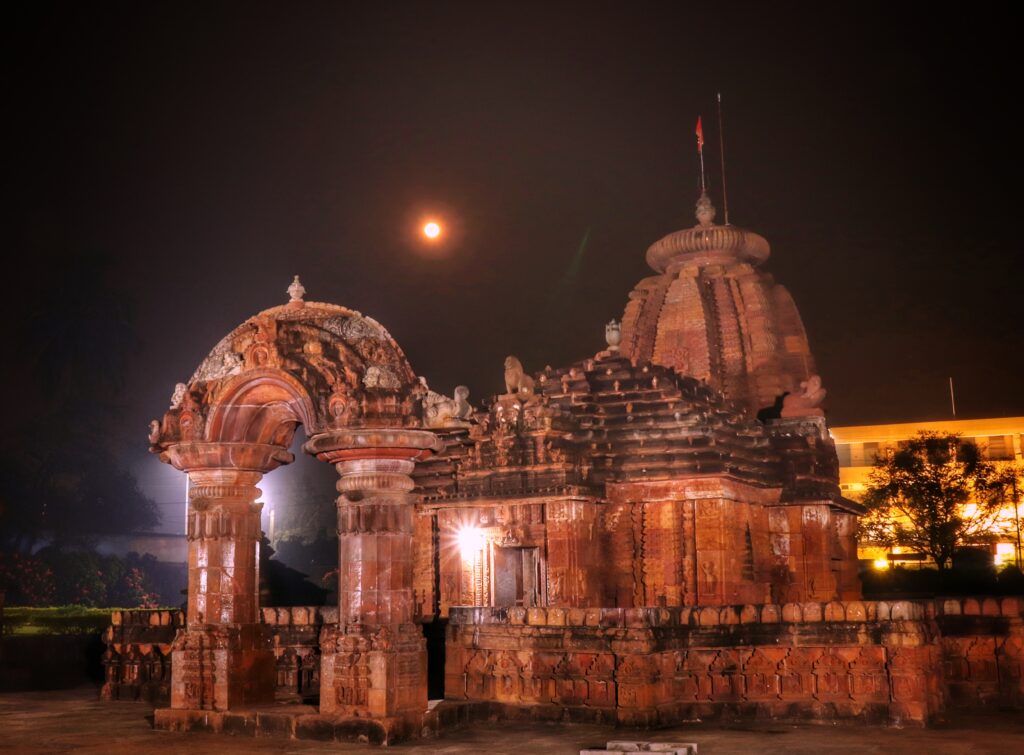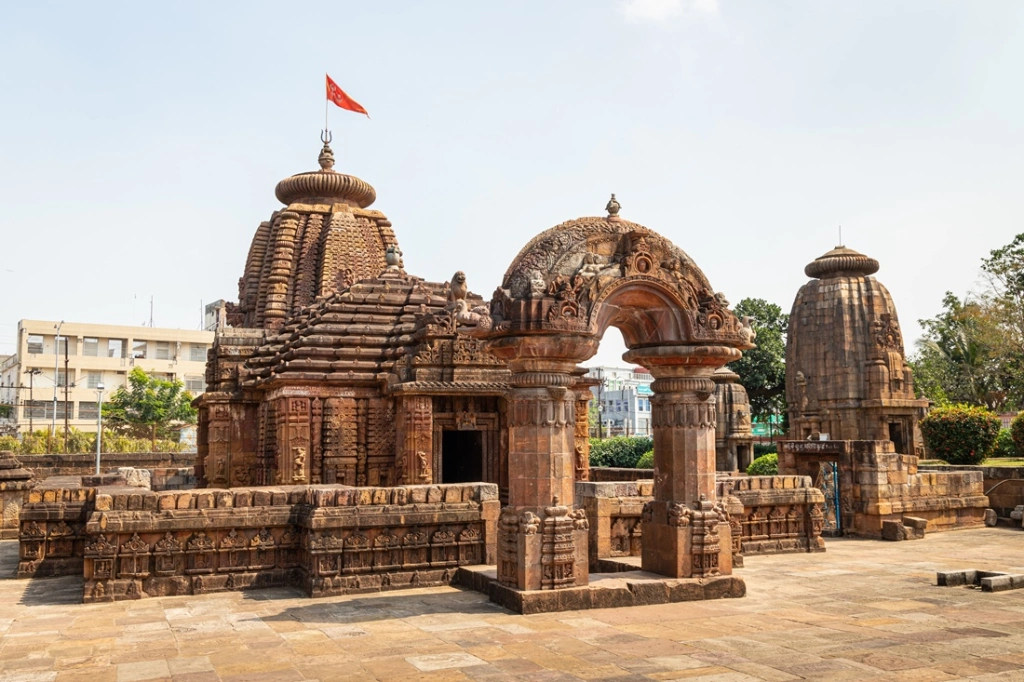
Introduction
Mukteswara Temple, which is one of the beautiful temple buildings in Bhubaneswar, Odisha, is the most beautiful form of Kalinga architecture. The temple was built in the 10th century under Somavamsi dynasty. The temple is also known as the ‘Gem of Odisha Architecture.’ The temple is a Shiva temple and is identified by its picturesque carvings, sculptural beauty, and its very characteristic torana (arched gateway).
In this blog, here we shall learn about the history, architecture, religious significance, and cultural impact of this beautiful temple, giving you an overall idea about one of the best heritage sites in India.
Historical Background
Mukteswara Temple was built by Somavamsi dynasty, the patrons of Odisha temple architecture, in the 950-975 CE period. The “Mukteswara” name is dedicated to “Lord of Freedom,” or salvation and liberation of the soul. It is an important part of the transition period of Kalinga architecture that represents the transition period between the early period and the later period of temple construction.
Although the temple is poor in history, its style of architecture indicates that it played an important part in the evolution of later temples like Lingaraj Temple and Rajarani Temple at Bhubaneswar.
Architectural Marvel
Mukteswara Temple is famous for its beautiful craftsmanship and delicate detailing, and therefore the most desired temple in India. The characteristic architectural features are:
1. Torana (Arched Gateway)
Among the most distinctive features of Mukteswara Temple is that it possesses one single torana (gateway arch) alone. It possesses carvingsly adorned gateway constructed out of floral motifs, celestial beings, and mythological subjects, which are more based on Buddhism specifically from Mahayana tradition hitherto existing. This torana distinguishes Mukteswara Temple from all other Odisha Shiva temples.
2. Vimana (Sanctum Tower)
The sanctum sanctorum or the vimana stands at 10.5 meters (35 feet) in height and is a rekha deula (curvilinear tower) order that would become a defining feature of Odishan temples from this point onwards. They possess minute temple images and lovely carvings of the gods and the stars on the tower.
3. Jagamohana (Assembly Hall)
The temple also features a jagamohana (assembly hall) with a pyramidal roof, which is typical of Kalinga style. The interior of the hall features sophisticated carvings of sages, dancers, and musicians, which depict Hindu epic stories such as the Ramayana and Mahabharata.
4. Finely Detailed Sculptures
Mukteswara Temple is a sculptor’s paradise due to the fine and detailed sculptures. The walls of the temple feature:
- Apsaras in various dance postures of heaven
- Inner dispositions of sages
- Geometric shape, flower motif, and beings
- Mythology in Hindu scripture stories
All these bear testimony to the master level of skill of the artist of the time.
Religious and Spiritual Significance
Mukteswara Temple is not merely a wonder of architecture but also a spiritual center of attraction for the followers of Lord Shiva too. The highlights of its religious significance are:
- Mukteswara Lord Shiva: A temple of Lord Shiva in the shape of Mukteswara, or “The Lord Who Provides Liberation.” Here, worship bestows spiritual liberation and enlightenment upon the life of an individual.
- A Center for Tantra Practices: Sanctum is a Tantric worship center, as one can see from its sculptural depiction of yogic postures and meditating sages.
- Shiva Lingam: Sanctum houses a Shiva Lingam, the focal deity of pilgrims’ devotion praying for prosperity and liberation from the cycle of birth and death.
- Role in Shivaratri Celebrations: Temple organizes grand celebrations on Maha Shivaratri, with thousands of pilgrims thronging to witness rituals conducted day and night.
Mukteswara Temple was the trendsetter of Odishan art and culture. Its most significant contributions to culture are:
- Influence on Later Temples: Sculptures and images of Mukteswara Temple went on to influence even larger temples like the Lingaraj Temple and Rajarani Temple.
- Odissi Dance Influence: Odissi dance steps have also been used as sculptures in the temple, which shows that it has strong historical origins in Odisha’s traditional dance.
- Tourism and Heritage Site: Mukteswara Temple is a wonderful site to be visited by historians, architects, and spiritual activists of the globe.
Best Time to Visit Mukteswara Temple
If a visit to Mukteswara Temple is already being planned, October to March is the best time to visit, with beautiful weather. Major fairs and festivals are:
- Maha Shivaratri (February-March): A wonderful festival of Lord Shiva.
- Mukteswara Dance Festival (January-February): Magnificent festival with Odissi dance performances on temple grounds.
The temple is situated in the Old Town of Bhubaneswar, Odisha, and is easily approachable by all modes of transport:
- By Air: The nearest air terminal is Biju Patnaik International Airport (Bhubaneswar), 4 km.
- By Train: The Nearest Railway Station Bhubaneswar is 5 km from the temple.
- By Road: It is a nicely road-connected city and can be easily reached by buses, auto-rickshaws, and taxis from almost all parts of Bhubaneswar.
Literature Review
Mukteswara Temple is a testimony to Odisha’s cultural and architectural richness. Its flawless carvings, sophistication, and spirituality have made it India’s holiest temple. Be a history enthusiast, a devotee, or an architecture lover, the temple has something in store for an unforgettable experience.
A visit to Mukteswara Temple is not only a look at an old building; it is a step into a world where divinity and beauty walk hand in hand to astonish all the visitors.
So, if you are in Odisha, Mukteswara Temple is a must-visit!
FAQs
- Why is Mukteswara Temple special?
Mukteswara Temple is renowned for gorgeous torana (arched gateway), gorgeous sculptures, and gorgeous carvings, one of the most gorgeous specimens of Kalinga architecture. - Who built the Mukteswara Temple?
The Somavamsi dynasty built the temple during the 10th century. - What is Mukteswara Temple’s presiding deity?
The temple is a temple of Lord Shiva as Mukteswara, i.e., “Lord of Liberation.” - **How do I get to Mukteswara Temple?
It is located at Bhubaneswar, Odisha, and readily accessible by air, railway, and road. - **When to go to Mukteswara Temple?
Best time to go is *October to March*, suitable for *Maha Shivaratri* and the Mukteswara Dance Festival.



